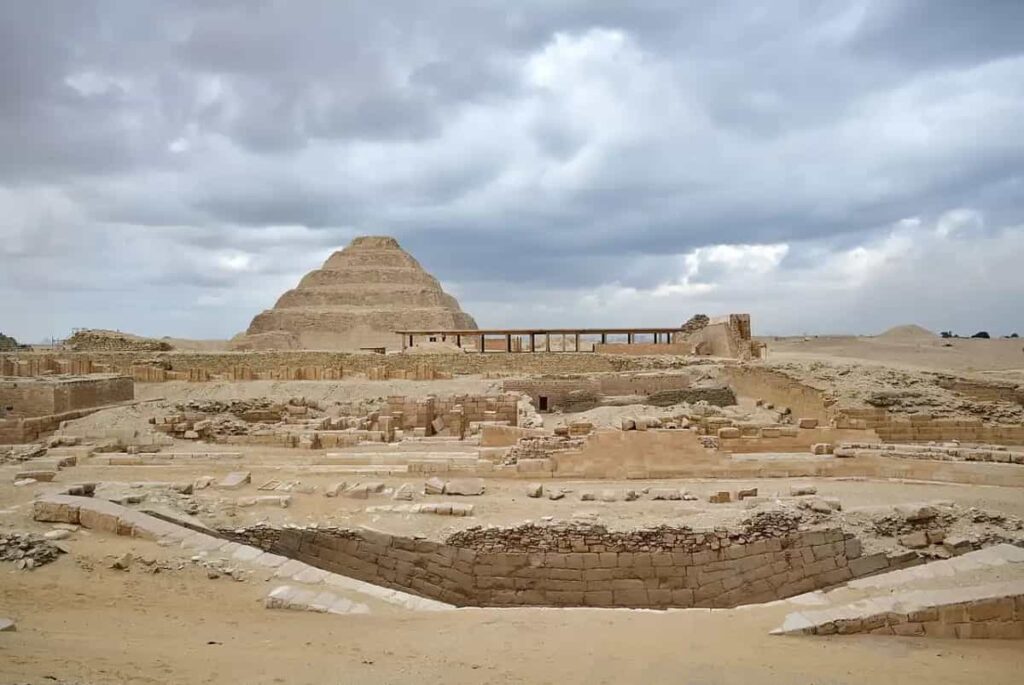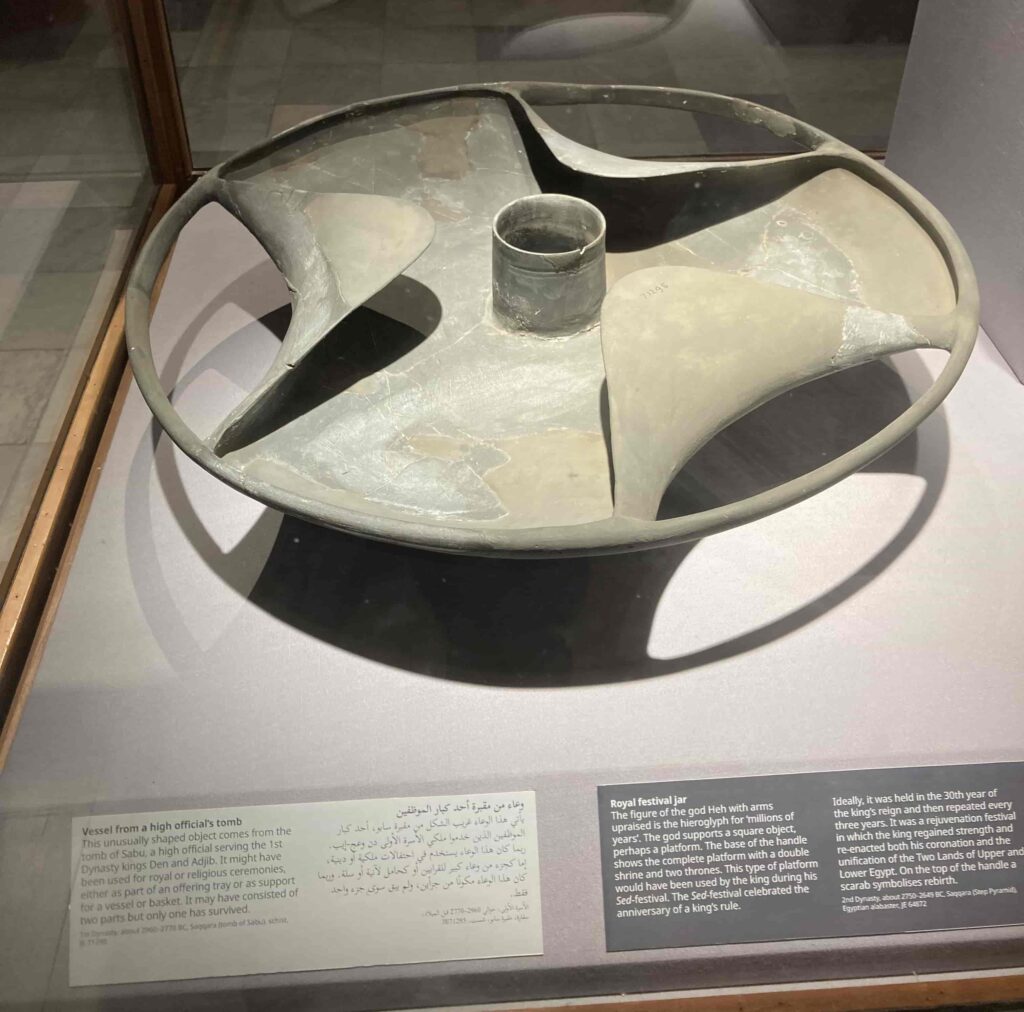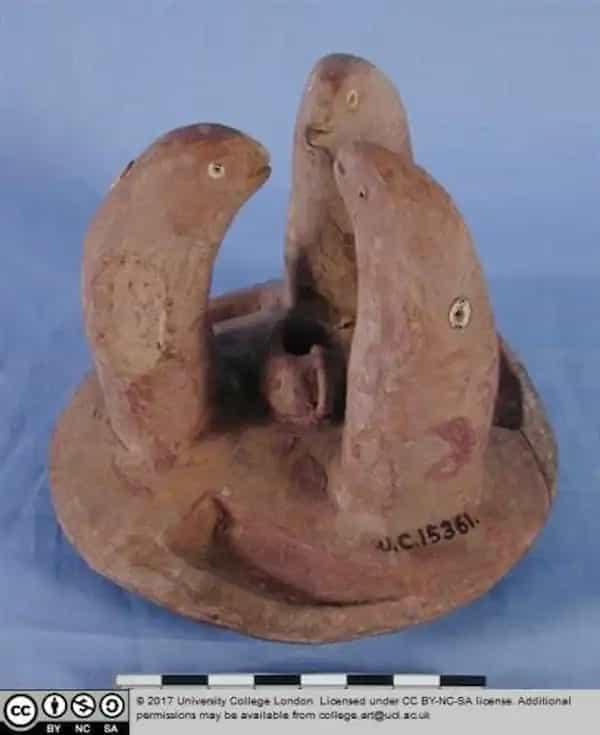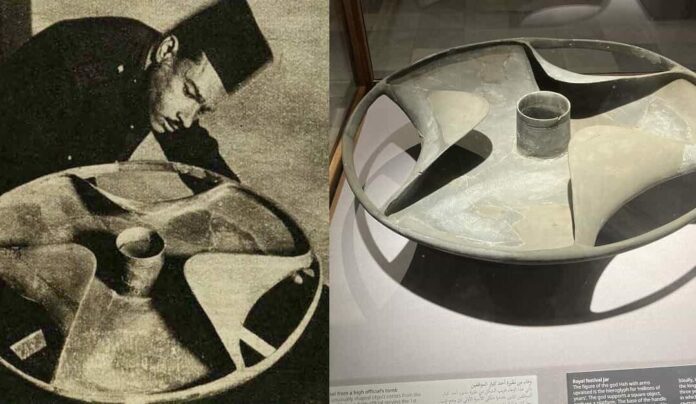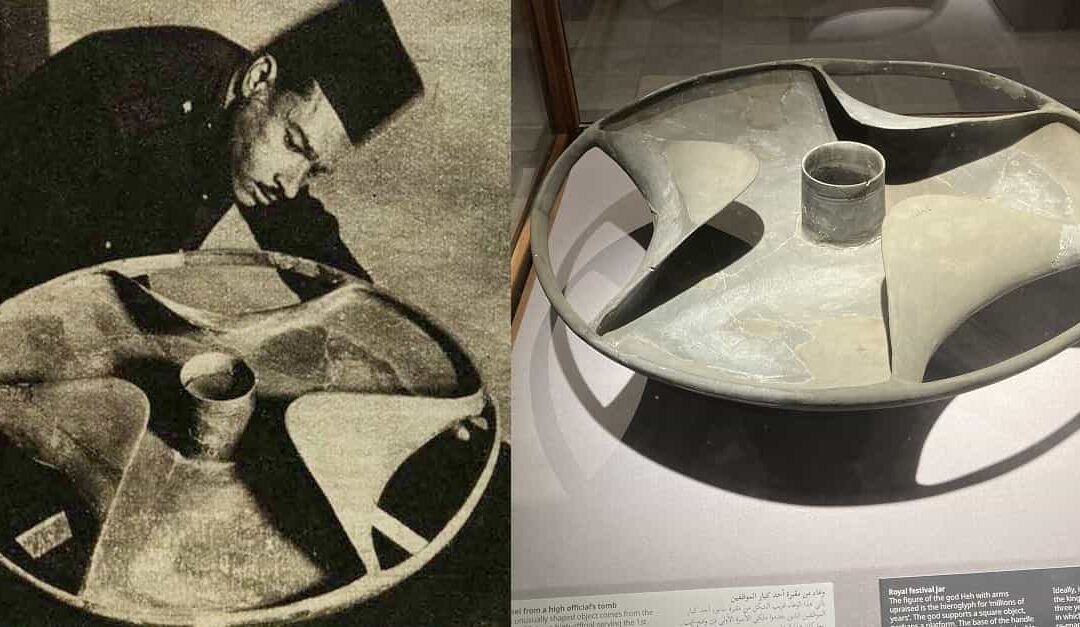
An intriguing artifact was unearthed on January 19, 1936, by British archaeologist Walter Bryan Emery during an excavation at the Saqqara necropolis in Egypt. The discovery took place in mastaba S3111, the tomb of a prominent Egyptian official named Sabu, who lived during the First Dynasty (circa 3000-2800 BC).
The artifact in question is a concave slate disc measuring 61 centimeters in diameter and standing at a maximum height of 10.6 centimeters. It features a central hole with a diameter of 8 centimeters, surrounded by what appear to be three “wings” or “lobes” extending from the outer edge. This distinctive configuration gives the disc an overhead resemblance to a “steering wheel” with three wide spokes.
Initially found fragmented within the burial chamber alongside Sabu’s skeleton, Emery painstakingly restored the artifact. Today, it is proudly exhibited in the Egyptian Museum in Cairo under the name of the Sabu Disk. Remarkably, it stands as the sole known ancient Egyptian piece with such a unique lobed shape.
While the First Dynasty witnessed the creation of numerous large, high-quality stone bowls and plates, as well as finely worked slate pieces in Saqqara, none match the distinct shape of the Sabu Disk.
This suggests that it was a specially crafted object reserved exclusively for Sabu, likely indicative of his esteemed status within ancient Egyptian society.
Its function remains a mystery, though Emery carefully speculated that it could have functioned as some sort of container mounted on a support, although no remnants of such a support were discovered.
Others propose that it may have been an imitation of contemporary metal objects, or that its fragile nature rendered it unsuitable for practical purposes, relegating it solely to a decorative role.
More extravagant theories suggest it served as a colossal triple-flame lamp or a flywheel designed to store rotational energy. Engineers from Airbus examined 3D replicas of the artifact and concluded that it exhibits aerodynamic properties, hinting at a potential function as a sophisticated throwing implement.
Its radial symmetry, however, precludes its use as a propeller or turbine, despite the assertions of some adherents to pseudoscientific theories.
An object bearing resemblance to the Sabu Disk in shape is a clay figurine dating back to the Nagada II period (a phase of the Egyptian predynastic period spanning from approximately 3500 to 3400 BC), which is housed in the Petrie Museum in London.
This figurine features a round disk adorned with four snakes, three of which are depicted with their heads raised, encircling a central round-shaped container, while a fourth snake appears to be drinking from it.
Sabu, believed to have lived during the reigns of Pharaohs Den and Anedjib (potentially being the latter’s son), likely held a position as an administrator or governor of a city or province.
Upon the discovery of his tomb, archaeologists found Sabu’s remains still within the wooden sarcophagus, placed on its side in accordance with customary burial practices of the time.
Within the funerary chamber, remnants of Sabu’s belongings, primarily metallic and lithic elements, were preserved, including stone tableware and the distinctive disc.
Despite its elusive function, the Sabu Disk holds significant historical value for various reasons. It stands as a splendid testament to the advanced stone craftsmanship prevalent during the late predynastic period and the First Dynasty, showcasing the remarkable skills of ancient Egyptian artisans even prior to the era of the great pyramids.
